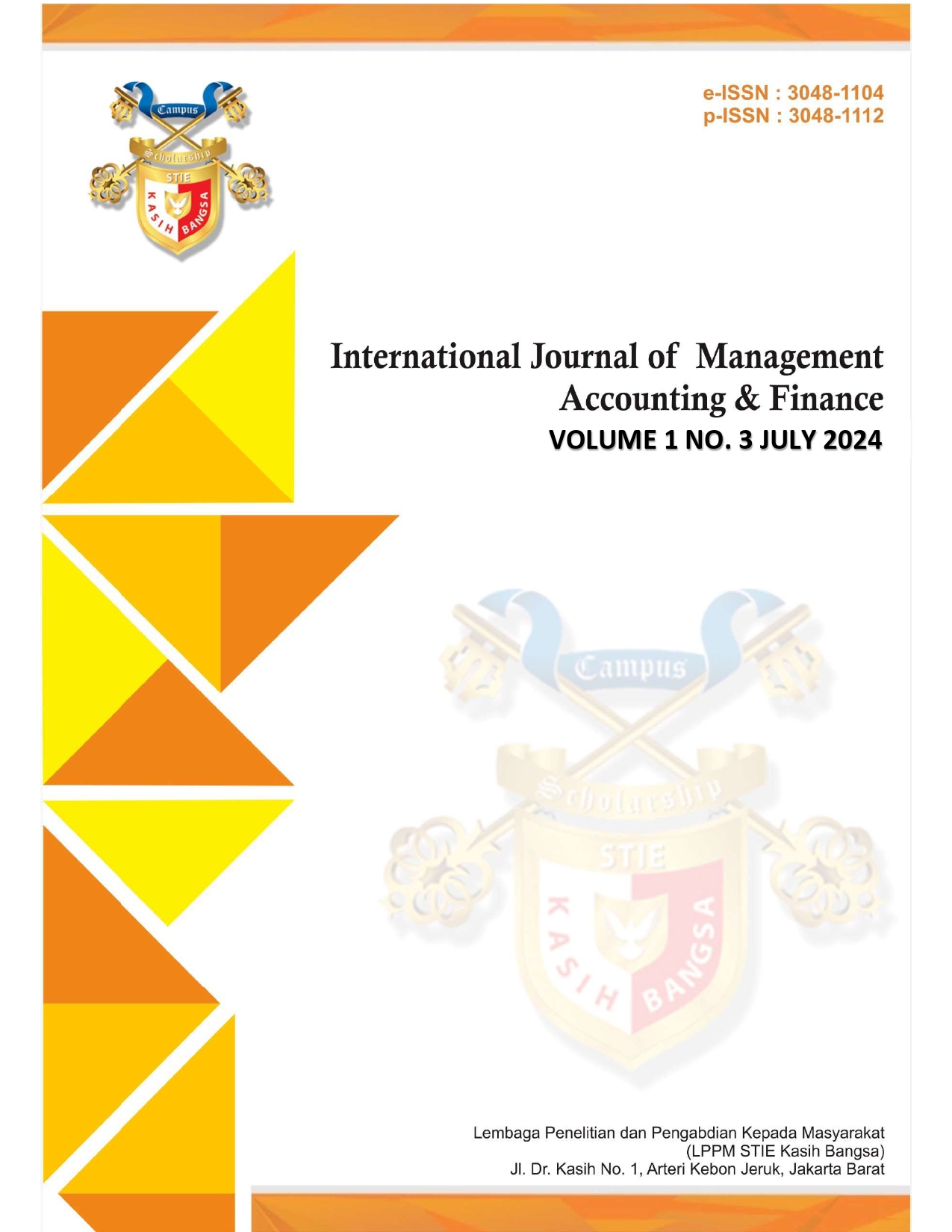Closing Auctions and Price Discovery: Investigating the Role of Index Funds and Their Influence on Market Liquidity
DOI:
https://doi.org/10.70142/kbijmaf.v1i4.235Keywords:
Closing Auctions, Price Discovery, Index Funds, Market Liquidity, Financial MarketsAbstract
This qualitative literature review explores the role of closing auctions in price discovery and the influence of index funds on market liquidity. By analyzing recent empirical studies, the review reveals that closing auctions serve as vital mechanisms for aggregating market information, thus facilitating accurate price formation. The presence of index funds significantly enhances market liquidity during these auctions, contributing to increased trading volumes and price stability. However, the findings also indicate a complex relationship, as index fund activities can lead to increased volatility in turbulent market conditions. This dual impact underscores the need for market participants, including traders and regulators, to closely monitor index fund behavior during closing auctions. The review highlights the evolving landscape of financial markets and emphasizes the importance of understanding how these elements interact within the broader ecosystem. While the research provides valuable insights, limitations such as selection bias and methodological variability are acknowledged, suggesting areas for future research. Overall, this review contributes to a deeper understanding of the interplay between closing auctions and index funds, informing stakeholders about the implications for market efficiency and stability.
References
Admati, A. R., & Pfleiderer, P. (1988). A theory of intraday patterns: Volume and price variability. Review of Financial Studies, 1(1), 3-40.
Baltussen, G., et al. (2019). Indexing and stock market serial dependence around the world. Journal of Financial Economics, 131(3), 661-683.
Ben-David, I., et al. (2018). Do ETFs increase volatility? Journal of Finance, 73(6), 2413-2436.
Bessembinder, H. (2015). Predictable ETF order flows and market quality. Journal of Trading, 10(2), 14-29.
Bessembinder, H., Pan, X., & Venkataraman, K. (2020). Price discovery in illiquid markets: Evidence from the closing auction. Journal of Financial Markets, 50, 100539. https://doi.org/10.1016/j.finmar.2020.100539
Bogousslavsky, V., & Muravyev, D. (2023). Who trades at the close? Implications for price discovery and liquidity. Journal of Financial Markets, 66, 100852. https://doi.org/10.1016/j.finmar.2023.100852
Braun, V., & Clarke, V. (2006). Using thematic analysis in psychology. Qualitative Research in Psychology, 3(2), 77-101. https://doi.org/10.1191/1478088706qp063oa
Budish, E., Cramton, P., & Shim, S. (2015). The high-frequency trading arms race: Frequent batch auctions as a market design response. Quarterly Journal of Economics, 130(4), 1547-1621.
Chen, Y., Xu, H., & Zhang, W. (2021). Trading volume and price discovery in closing auctions: Evidence from the Chinese stock market. Journal of International Financial Markets, Institutions and Money, 72, 101357. https://doi.org/10.1016/j.intfin.2021.101357
Chung, K. H., et al. (2020). Tick size, liquidity for small and large orders, and price informativeness: Evidence from the tick size pilot program. Journal of Financial Economics, 136(3), 1112-1132.
Cohen, L., & Dey, A. (2019). The impact of index funds on market liquidity: Evidence from the US equity market. Review of Financial Studies, 32(9), 3469-3503. https://doi.org/10.1093/rfs/hhz028
Creswell, J. W., & Poth, C. N. (2018). Qualitative inquiry and research design: Choosing among five approaches. Sage Publications.
Cushing, M., & Madhavan, A. (2000). Stock returns and trading at the close. Journal of Financial Markets, 3(4), 337-365.
Dennis, P., & Mayhew, S. (2009). Microstructural biases in empirical tests of option pricing models. Review of Derivatives Research, 12(3), 169-191.
Duarte, J., & Jones, C. S. (2010). The price of market volatility risk. Working paper, Rice University.
Eaton, G. W., et al. (2021). Measuring institutional trading costs and the implications for finance research: The case of tick size reductions. Journal of Financial Economics, 141(3), 1110-1135.
Fama, E. F., & MacBeth, J. D. (1973). Risk, return, and equilibrium: Empirical tests. Journal of Political Economy, 81(3), 607-636.
Fang, L., & Peress, J. (2020). The role of index funds in stock market volatility. Journal of Financial Economics, 135(3), 548-572. https://doi.org/10.1016/j.jfineco.2019.07.007
Harris, L. (2020). Trading and exchanges: Market microstructure for practitioners. Oxford University Press.
Hasbrouck, J. (2019). The role of closing auctions in the price discovery process. Journal of Financial Markets, 42, 86-98. https://doi.org/10.1016/j.finmar.2018.10.001
Hendershott, T., et al. (2014). Price pressures. Journal of Financial Economics, 113(3), 537-559.
Higgins, J. P., & Green, S. (2011). Cochrane Handbook for Systematic Reviews of Interventions. The Cochrane Collaboration.
Jiang, J., Liu, Y., & Zhang, H. (2022). The effect of passive fund flows on market volatility: Evidence from the COVID-19 crisis. Journal of Financial Markets, 62, 100613. https://doi.org/10.1016/j.finmar.2021.100613
Pagano, M. S., et al. (2013). A call auction’s impact on price formation and order routing: Evidence from the Nasdaq stock market. Journal of Financial Markets, 16(4), 517-542.
Pástor, L., & Stambaugh, R. F. (2019). Liquidity risk and expected stock returns. Journal of Political Economy, 127(5), 2445-2478. https://doi.org/10.1086/701832
Torrance, H. (2017). Methodological pluralism in educational research: A systematic review of the literature. International Journal of Educational Research, 84, 146-157. https://doi.org/10.1016/j.ijer.2017.01.004
Vincent, B., et al. (2013). The cross-section of intraday and overnight returns. Journal of Financial Economics, 109(2), 207-228.
















